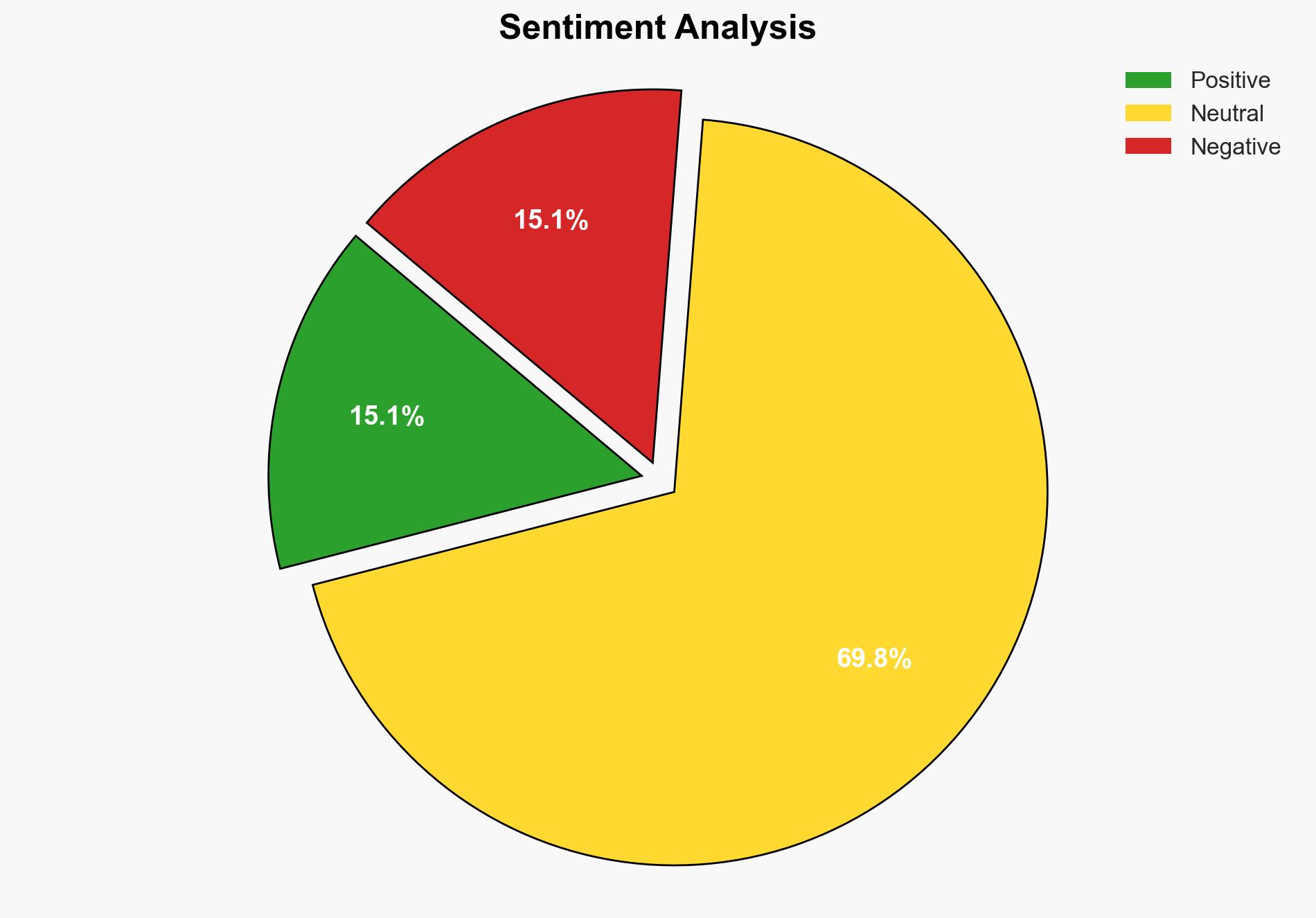Kurdish-led SDF agrees to integrate with Syrian government forces – BBC News
Published on: 2025-03-11
Intelligence Report: Kurdish-led SDF agrees to integrate with Syrian government forces – BBC News
1. BLUF (Bottom Line Up Front)
The Kurdish-led Syrian Democratic Forces (SDF) have agreed to integrate with Syrian government forces, marking a significant shift in the region’s power dynamics. This agreement aims to unify military and civilian institutions under the Syrian state, potentially stabilizing northeastern Syria. Key outcomes include the cessation of hostilities, control of strategic locations, and recognition of Kurdish rights within Syria. The deal may de-escalate tensions with Turkey and influence regional security dynamics.
2. Detailed Analysis
The following structured analytic techniques have been applied for this analysis:
SWOT Analysis
Strengths: Unified military command, potential stabilization of northeastern Syria, recognition of Kurdish rights.
Weaknesses: Potential internal resistance, historical mistrust between parties.
Opportunities: De-escalation of Turkish-Syrian tensions, enhanced regional cooperation.
Threats: Possible resurgence of extremist groups, international intervention risks.
Cross-Impact Matrix
The integration of SDF with Syrian government forces may influence neighboring regions by reducing cross-border tensions with Turkey and altering alliances with regional powers such as Saudi Arabia and Qatar. The deal could also impact Israel’s security posture concerning the Golan Heights.
Scenario Generation
Best-case scenario: Successful integration leads to long-term stability and economic recovery in northeastern Syria.
Worst-case scenario: Internal conflicts within the SDF and Syrian forces lead to renewed hostilities and regional instability.
Most likely scenario: Gradual integration with periodic challenges, leading to a cautious but steady improvement in regional stability.
3. Implications and Strategic Risks
The integration poses strategic risks, including potential backlash from factions within the SDF and Syrian government. The deal may provoke reactions from Turkey, which views the SDF as a threat. Additionally, there is a risk of increased tensions with Israel if the integration affects the security dynamics in the Golan Heights. Economically, the control of oil and gas fields could shift regional power balances.
4. Recommendations and Outlook
Recommendations:
- Encourage diplomatic engagement between Syria, Turkey, and regional powers to ensure peaceful integration.
- Monitor extremist group activities to prevent exploitation of transitional vulnerabilities.
- Support initiatives that promote Kurdish rights and integration into the Syrian political process.
Outlook:
Best-case: The integration leads to a stable and unified Syria with improved regional relations.
Worst-case: Internal divisions and external pressures result in renewed conflict and regional instability.
Most likely: A gradual integration process with ongoing negotiations and adjustments, leading to cautious optimism for stability.
5. Key Individuals and Entities
Mazloum Abdi, Ahmed al Sharaa, and the Syrian Democratic Forces (SDF) are central figures in this agreement. Their roles in the integration process will be crucial for its success. Additionally, the involvement of neighboring countries such as Turkey, Saudi Arabia, and Qatar will influence the regional impact of this development.




